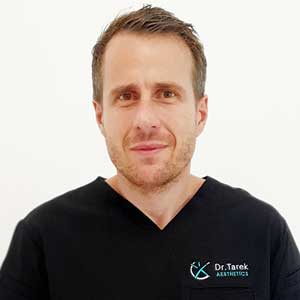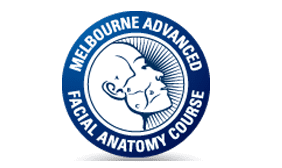Breast reduction surgery can be a life-changing procedure for many women, providing relief from physical discomfort and improving self-confidence. However, it is essential to understand that the recovery process is a crucial part of the journey.
In this comprehensive guide, we will take you through the breast reduction recovery week by week, providing valuable insights and tips to help you heal effectively.
What is Non-Surgical Breast Reduction?
Non-surgical breast reduction refers to methods employed to reduce breast size without undergoing invasive surgery. This approach is often sought after by individuals looking for alternative methods that come with minimal downtime and less physical trauma.
- No need for incisions or general anaesthesia
- Methods can include cool sculpting or radio-frequency treatments
- Quick recovery times compared to traditional surgeries
- Often less expensive than surgical breast reduction
- Gynecomastia natural remedies provide insights into non-surgical approaches
- Results can vary depending on the chosen method
- Ideal for those who wish to avoid the scars associated with surgery
The Science Behind Non-Invasive Breast Reduction Techniques
The world of non-invasive breast reduction is supported by innovative technologies that focus on eliminating fat and tightening skin without surgical intervention. These methods rely on scientific principles to safely reduce breast size.
Book A Consultation With Dr Tarek Bayazid
Top-rated Plastic Surgeon For Breast Reduction in Dubai
- Techniques such as laser lipolysis break down fat cells.
- Radio-frequency treatments help tighten loose skin.
- Ultrasound-based methods target fat deposits non-invasively.
- Each technique may cater to different individual needs.
- Non-surgical methods come with a lower risk of infection.
- Hormone Treatment for Gynecomastia offers insights into hormonal solutions for breast reduction.
First 24 Hours Of Recovery After Breast Reduction
Below is a list detailing what one can expect during the first 24 hours of recovery after breast reduction:
| Time Post-Procedure | What to Expect | Recommendations |
| 0-2 hours | – Mild to moderate pain | – Take prescribed pain relief |
| – Drowsiness from anaesthesia | – Have someone drive you home | |
| 2-6 hours | – Swelling starts to become noticeable | – Wear a supportive bra as recommended by the surgeon |
| – Possible nausea from anaesthesia | – Consume light foods, stay hydrated | |
| 6-12 hours | – Increased tightness and discomfort | – Take the next dose of pain medication as prescribed |
| – Thirst and dry mouth | – Continue to drink fluids | |
| 12-18 hours | – Sensation returning to the chest area | – Avoid excessive movement; rest in a reclined position |
| – Possible onset of minor bruising | – Apply a cold compress if advised by the surgeon | |
| 18-24 hours | – Swelling might peak | – Keep the upper body elevated even when sleeping |
| – Initial signs of healing might be visible | – Avoid any strenuous activities |
Week 1 of Recovery: What to Expect Immediately After the Procedure
The first week post-procedure is vital for initial recovery, involving minimal physical activity and close monitoring of the treated areas.
- Minimal swelling and redness might be observed.
- It’s essential to avoid strenuous activities and heavy lifting.
- Keeping the area clean and dry to prevent infections.
- Over-the-counter pain relief may be advised for discomfort.
- Regularly scheduled check-ups might be necessary.
- Following post-procedure guidelines is essential for optimum results.
Recovery Process for Gynecomastia provides a detailed recovery pathway for those who underwent surgical treatments.
Week 2: Monitoring Changes and Understanding the Healing Process
By the second week, patients often notice a reduction in swelling and discomfort, marking the beginning of visible changes. At this stage, one might wonder, why is gynecomastia painful? Gaining insights into this can aid in managing expectations.
- Bruising, if present, begins to fade.
- Continued rest is crucial, but light activities can be reintroduced
- Wearing compression garments might be recommended
- Regular self-examinations to monitor progress and detect abnormalities
- Stay hydrated and maintain a balanced diet for optimum healing
- Consultation with healthcare professionals if unusual symptoms occur.
The Importance of Follow-Up Appointments in Weeks 3 and 4
These weeks are pivotal for assessing the procedure’s success and ensuring the healing process remains on track.
- Professionals will evaluate the treatment area’s progress
- Adjustments or additional treatments might be discussed if needed
- Addressing any concerns or complications promptly
- It can be a time to discuss future care or maintenance procedures
- Continued usage of recommended ointments or medications
- Who Treats Gynecomastia provides clarity on the experts involved in this healing process
- Patient feedback can help tailor recovery strategies
Week 5: Celebrating Milestones and Recognizing Progress
Five weeks post-procedure, significant improvements are often visible, and patients begin to enjoy the benefits of their decision. How Breast Reduction Can Improve Men’s Mental Well-being sheds light on the psychological benefits of such treatments.
- Marked reduction in swelling and discomfort
- Visual comparison with pre-procedure photographs to track changes
- Reintroduction to moderate physical activities
- Continued adherence to all medical recommendations
- Celebrate the procedure’s success with confidence
- Stay patient, as full results might still be a few weeks away
The Role of Diet and Exercise in Enhancing Recovery
Adopting a balanced diet and regular exercise regimen can significantly enhance the recovery process and sustain the results of the breast reduction procedure.
- Nutrient-rich foods can accelerate the healing process
- Avoiding excessive calorie intake prevents unwanted fat accumulation
- Gentle exercises can maintain circulation and muscle tone
- Staying active aids in overall health and well-being
- Get Rid Of Man Boobs With Diet offers dietary advice for gynecomastia patients
- Consulting with nutritionists can provide bespoke dietary plans
- Maintaining a stable weight post-procedure ensures long-lasting results
How to Optimize Healing in Weeks 6-8 Post-Procedure
Approaching two months post-procedure, patients are typically in the final stages of recovery. Now’s the time to optimise the healing process and address any remaining concerns.
- Gradual reintroduction to regular physical activities is essential
- Monitor the treated areas for consistent texture and appearance
- Adhering to skincare regimes can prevent scarring and discolouration
- Stay in regular touch with healthcare professionals for updates
- Following a tailored exercise routine, like the gynecomastia exercise guide, can improve results
- Stay hydrated and nourished for internal healing
- Address any lingering discomfort or irregularities immediately
Common Concerns and Questions After Non-Surgical Breast Reduction
After undergoing a non-surgical procedure, it’s natural to have questions or concerns regarding the outcomes and long-term results. You must ask these questions before choosing a surgeon.
- Is the achieved result permanent?
- How often are maintenance sessions required?
- Addressing concerns about post-procedure skin appearance
- Potential risks of repeat procedures
- Is Gynecomastia Surgery Permanent?
- Understanding if and when touch-up treatments might be necessary
- The difference in recovery between surgical and non-surgical methods
Comparing Surgical vs. Non-Surgical Breast Reduction Recovery
While both methods aim to reduce breast size, the recovery processes for surgical and non-surgical procedures vary significantly.
- Surgical procedures generally have more extended downtime and more visible scars.
- Non-surgical treatments often promise quicker recovery but may need multiple sessions.
- Evaluating risks associated with both methods
- Cost comparisons between surgical and non-surgical treatments
- Understanding the longevity and permanence of results for both procedures
- Post-operative care necessities for surgical versus non-invasive techniques
Tips for Maintaining Results After a Non-Invasive Procedure
Achieving desired results is just half the battle; maintaining them is equally crucial. Understanding the breast reduction recovery week by week can be instrumental in ensuring these results last.
- Regular monitoring of breast size and shape
- Incorporating a balanced diet and regular exercise into daily routines
- Avoiding factors that might trigger an increase in breast size, like certain drugs causing gynecomastia
- Scheduling regular check-ups to monitor progress
- Staying informed about the latest advancements in non-surgical breast reduction
- Being aware of any hormonal changes or imbalances that might affect results
- Committing to a long-term care plan for lasting satisfaction
Recovery from breast reduction surgery is a gradual process, and while each individual’s experience can differ, being informed can significantly ease concerns and uncertainties. By understanding what to expect week by week, you can confidently approach the healing process, ensuring the best possible outcome from your procedure. Always consult with your healthcare professional for advice tailored specifically to your situation.







Related Posts